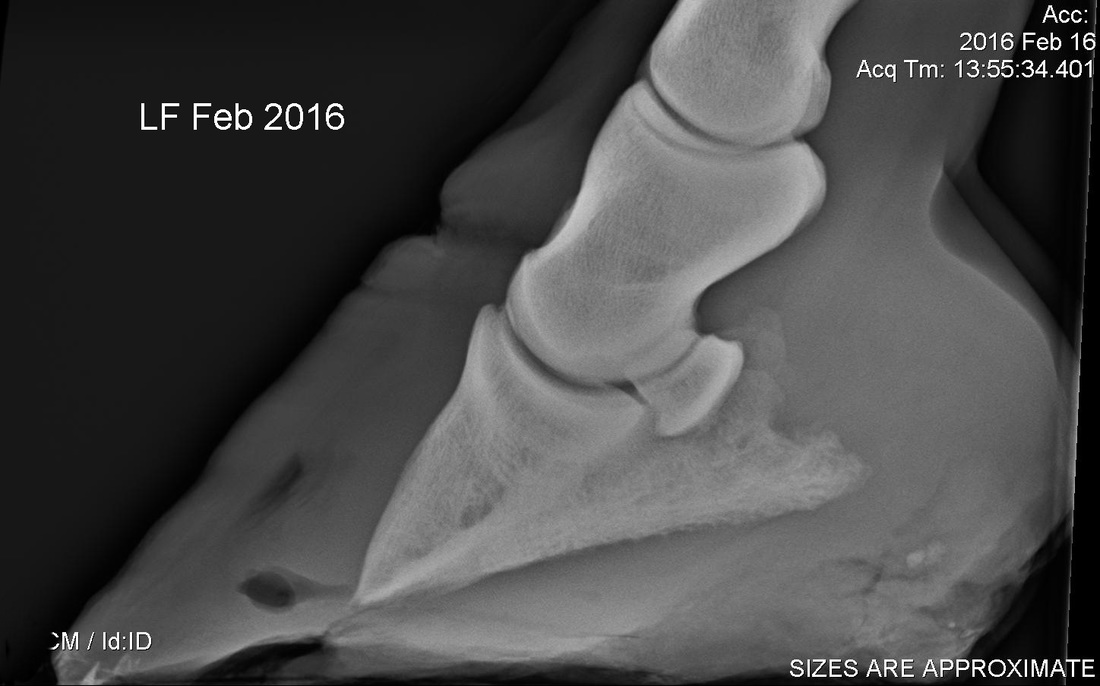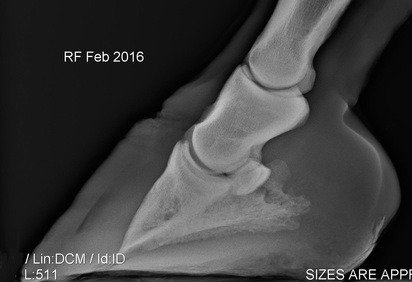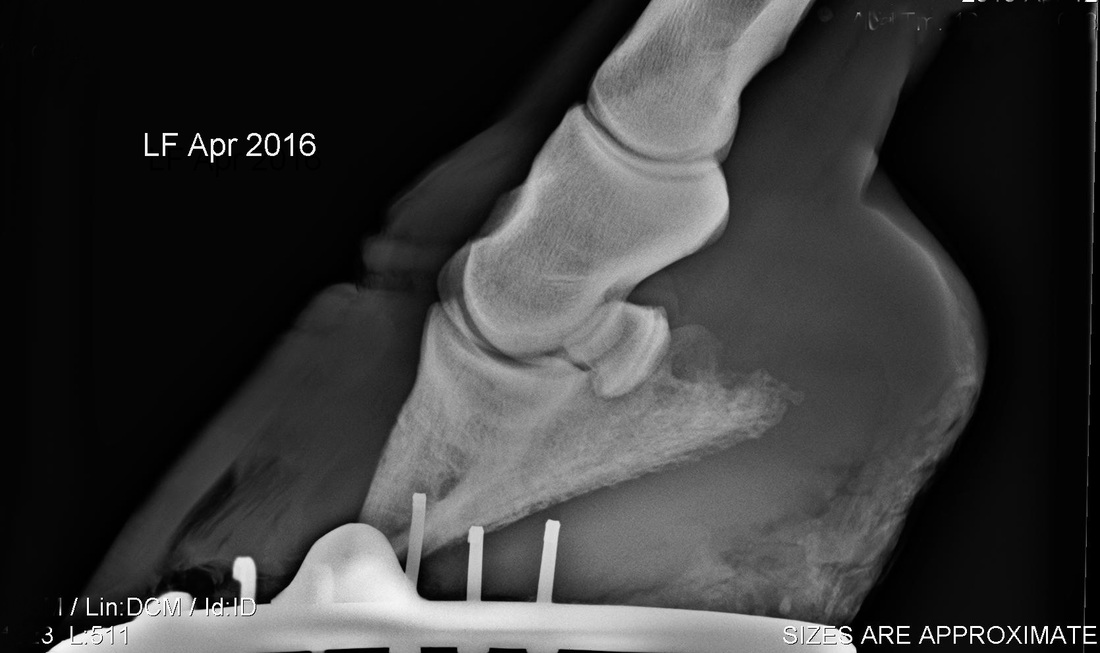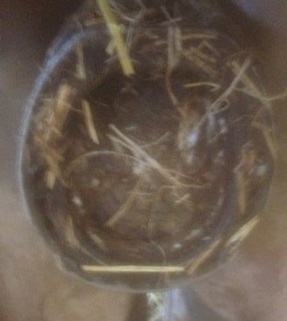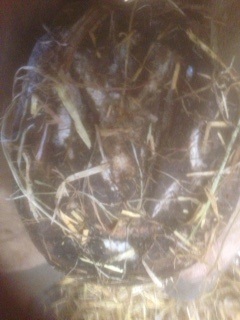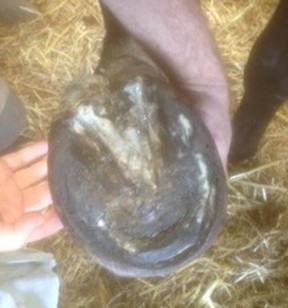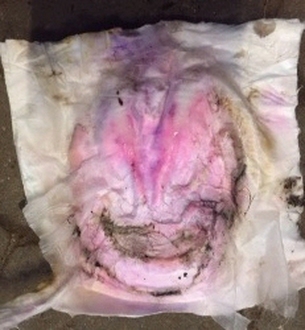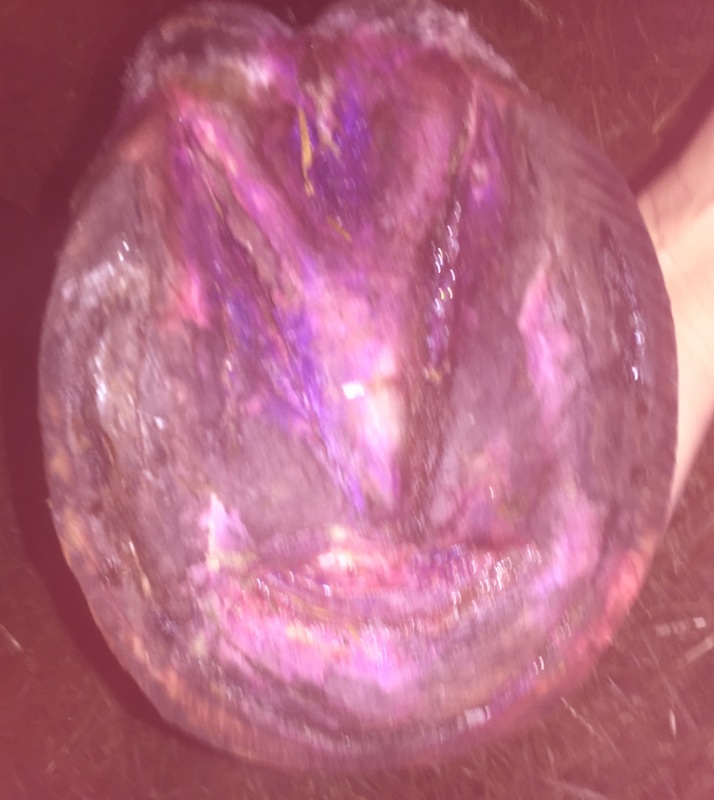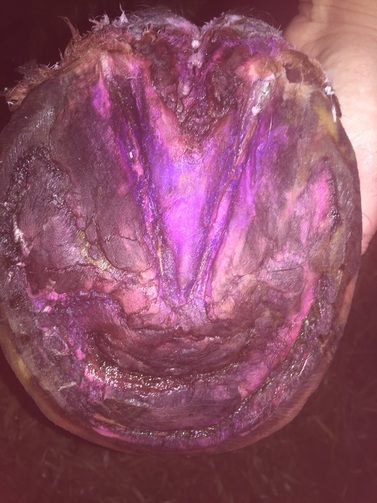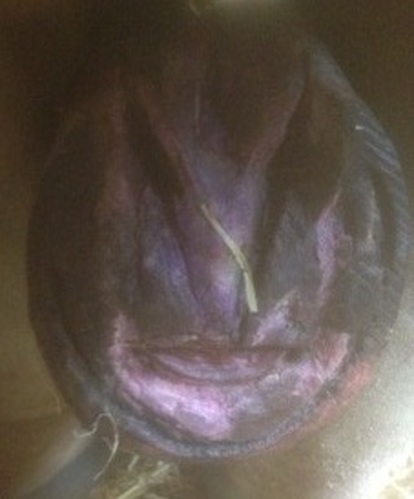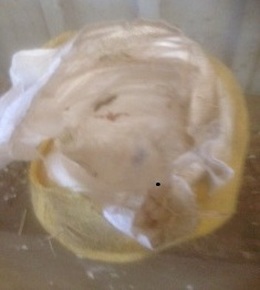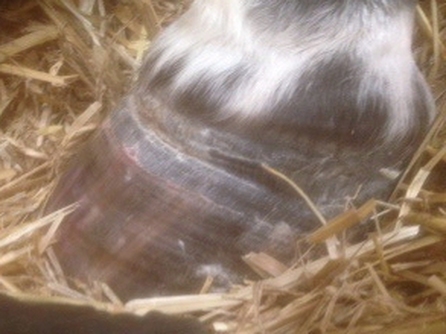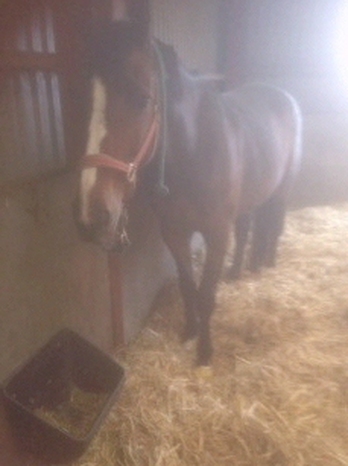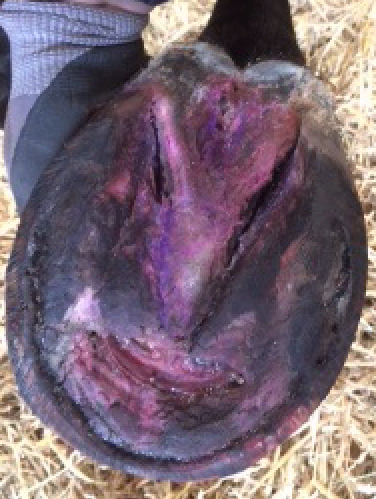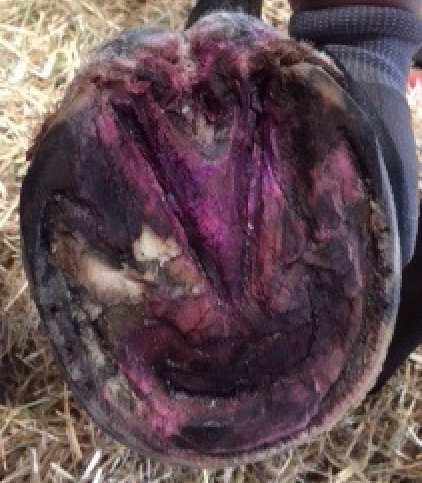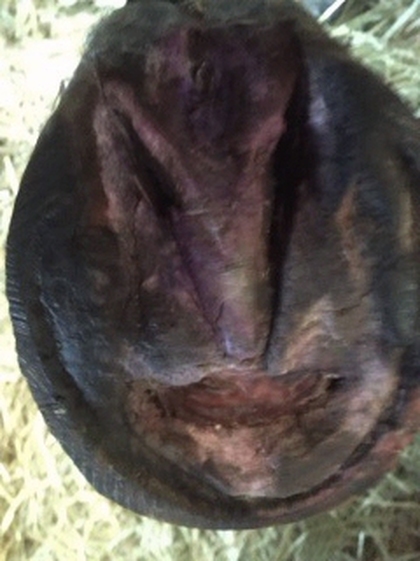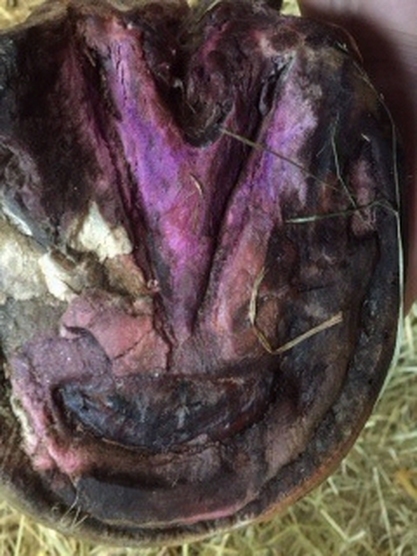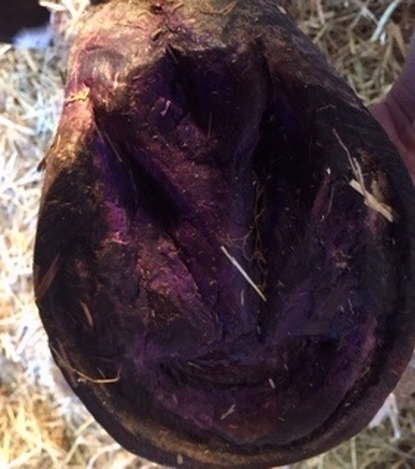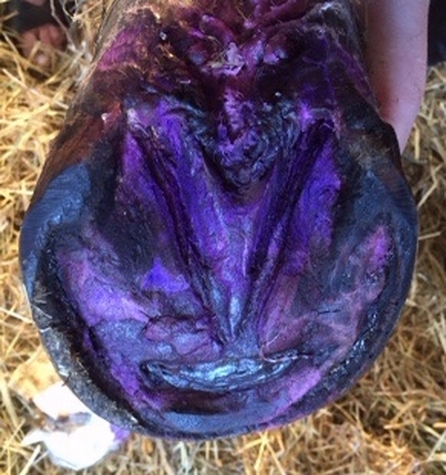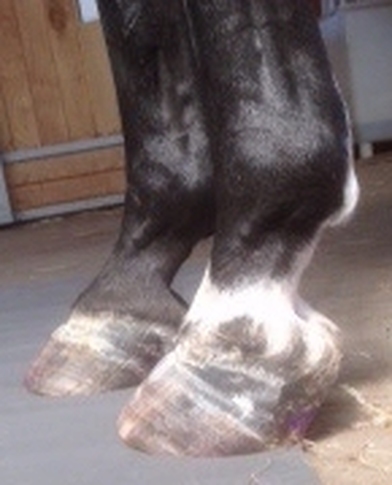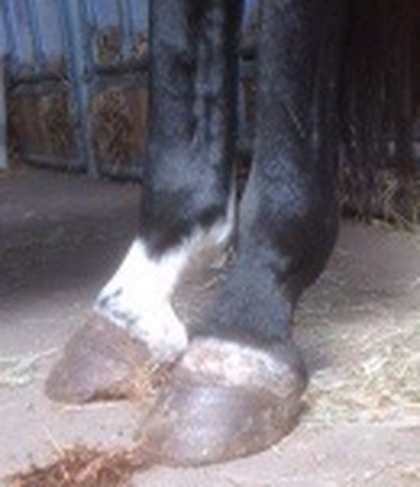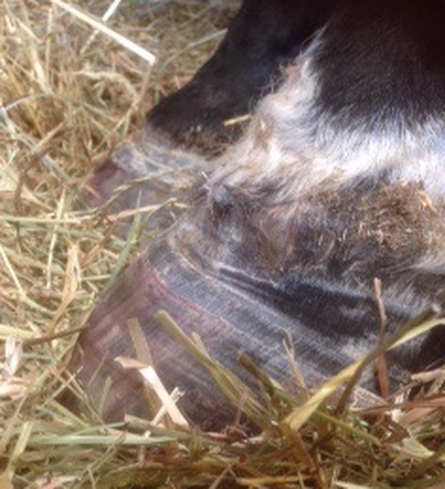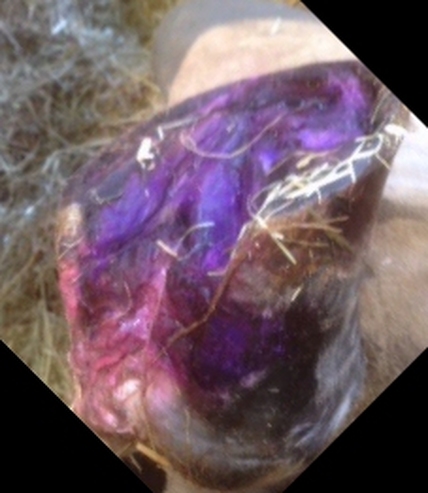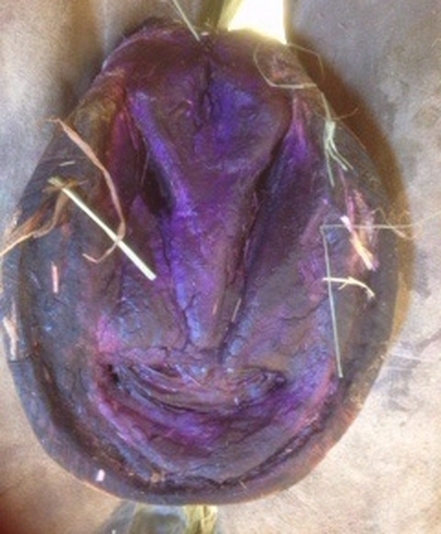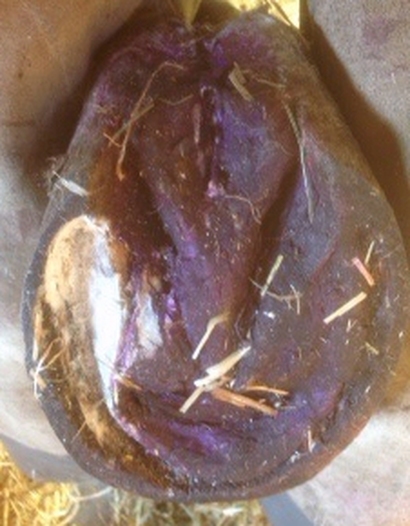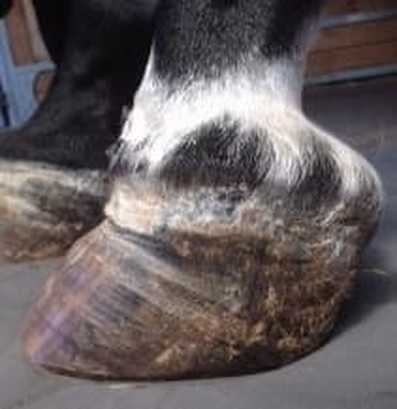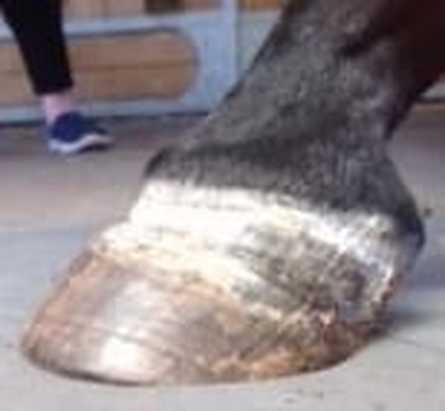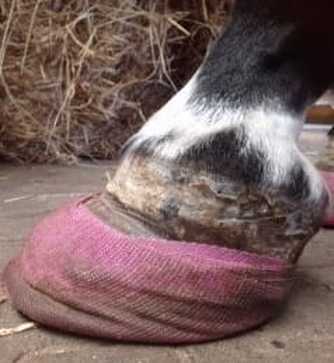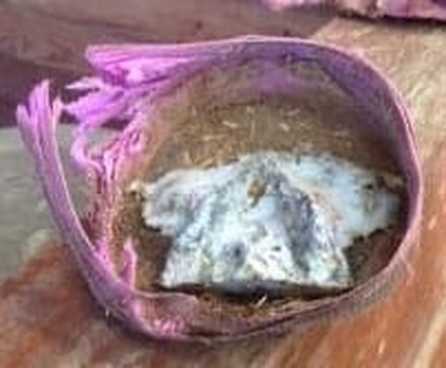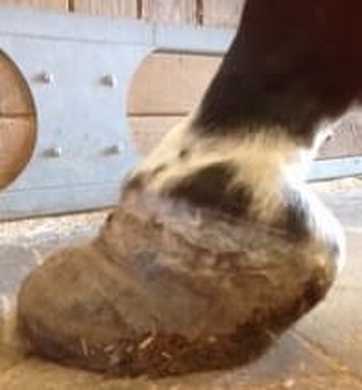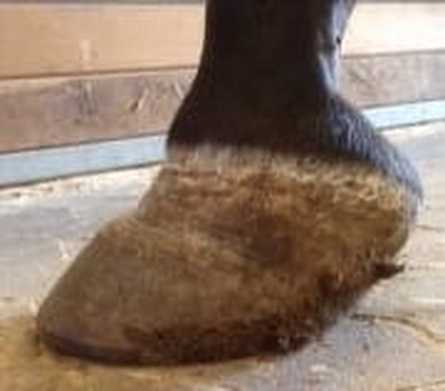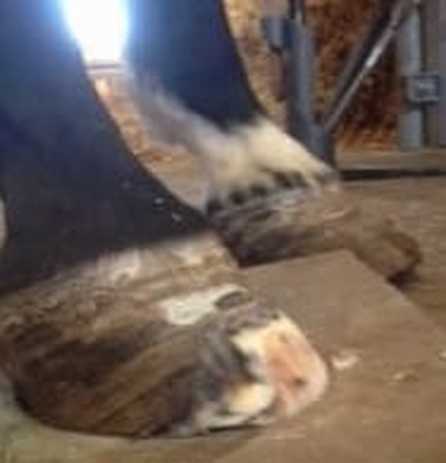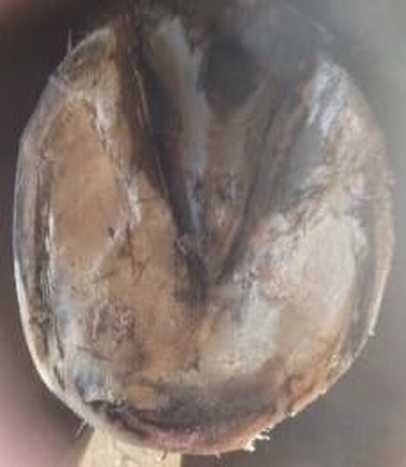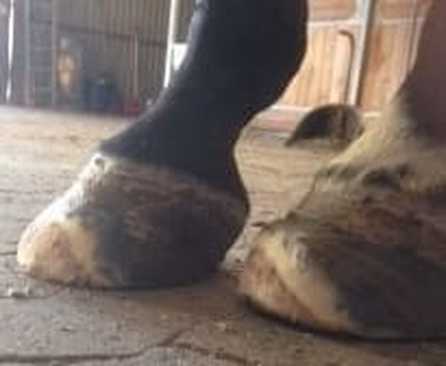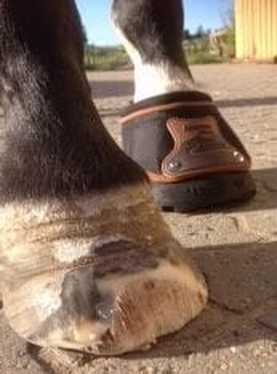Monroe
Monroe was in foal when she developed an acute infection in her caecum (the diagnosis was acute appendicitis but horses don't have an appendix, their caecum is considered to be their appendix) in December 2015. She spent three weeks in a clinic, and was prescribed pain relief for six months.
In February 2016 x-rays were taken and showed rotation of P3, an area of separation and abscessing, and sinking on both front feet.
Eggbar shoes were fitted with no solar support.
The foal was born, healthy, in March 2016, but was removed from Monroe and fostered.
In February 2016 x-rays were taken and showed rotation of P3, an area of separation and abscessing, and sinking on both front feet.
Eggbar shoes were fitted with no solar support.
The foal was born, healthy, in March 2016, but was removed from Monroe and fostered.
By April the pedal bones in both front feet had penetrated through the sole. Further x-rays were taken and a new farrier, Adam, found.
TLS comment: On p 351 of Care and Rehabilitation of the Equine Foot Pete Ramey says “at the first signs of laminitis, restore P3 to a more natural ground plane” (so 3-5 degree palmar angle), “relieve pressure on the walls and pad the sole with foam rubber – vertical sinking and destructive pressure to the solar corium can be prevented”. If this had been done as soon as signs of laminitis were seen, might the penetration have been prevented?
TLS comment: On p 351 of Care and Rehabilitation of the Equine Foot Pete Ramey says “at the first signs of laminitis, restore P3 to a more natural ground plane” (so 3-5 degree palmar angle), “relieve pressure on the walls and pad the sole with foam rubber – vertical sinking and destructive pressure to the solar corium can be prevented”. If this had been done as soon as signs of laminitis were seen, might the penetration have been prevented?
12 April 2016
On his first visit, Adam removed the shoes. He noted that both front feet looked and smelt terrible, with pus dripping from the infection around the penetration, and Monroe's general health was reported to have recently gone downhill.
|
Foot soaks were started immediately and continued for around 5 days, until the feet had cleaned up considerably. EasyCare Easysoaker boots were used, and the feet soaked in a basic soap and water to remove the worst of the pus, then Cleantrax or salt water. The feet were wrapped in disposable nappies and secured with Vetwrap to encourage the infection to drain and to keep the feet clean in between soaks. Once the infection in her feet was controlled, Monroe's general health improved and she returned to good spirits. |
18 April 2016
21 April 2016
25 April 2016
28 April 2016
12 May 2016
16 May 2016
02 June 2016
By 2 June all the infection had gone and polyester hoof casts were applied. In-hand walking commenced in the sand arena, starting with 10 minutes and building up over two weeks to 30 minutes.
30 June 2016
The casts were removed after 28 days and Monroe was left barefoot, still bedded on 2 feet deep straw and exercised in-hand in a sand arena.
26 July 2016
The first aggressive trim to bring the toe back was carried out. The new post-laminitis hoof wall had reached the ground at the heels.
Monroe continues to do well and further updates will follow soon.
For more information about solar penetration of P3, see Solar penetration.

